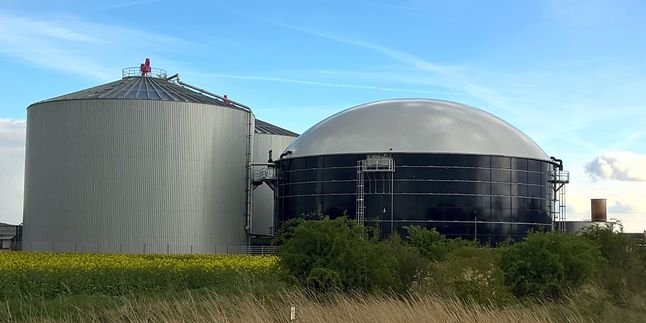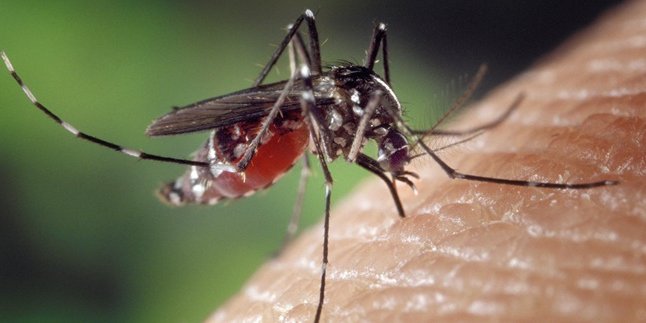Kapanlagi.com - Hypothesis is one of the scientific terms that may not be unfamiliar to most people. The term hypothesis is closely related to those involved in research and education. In general, a hypothesis is a temporary assumption of a scientific research or study being conducted by a researcher.
Therefore, a hypothesis is an important part of research. Proving the truth of a hypothesis is one of the goals of conducting a research. However, constructing a hypothesis cannot be done haphazardly, as easily as making a usual assumption. There are several things that need to be considered and used as a basis for creating a hypothesis.
To better understand what a hypothesis is and how to construct it, let's directly examine the following review that has been summarized by kapanlagi.com from various sources.
1. Understanding Hypothesis

(credit: unsplash)
From the origin of the word, hypothesis comes from two words in the Greek language, namely "hupo" and "thesis". Hupo in Indonesian means temporary, while thesis in Indonesian means statement or theory. Therefore, the combination of these two words can be interpreted as a temporary theory or statement.
In the Indonesian Dictionary (KBBI), the meaning of hypothesis is something considered true for reasons or expressions of opinion (theory, proposition, etc.) that its truth still needs to be proven. The intended proof is done through research.
Referring to both of these meanings, it can be concluded that a hypothesis is an assumption made based on several pieces of evidence. This is the starting point of any investigation that translates research questions into predictions.
2. Hypothesis Function

(credit: unsplash)
Hypothesis is closely related to science and research. In a study, hypothesis plays an important role in testing the relationship between two or more variables. According to ThoughtCo, hypothesis is part of the scientific method. Hypotheses are used to make predictions or explanations related to the object being tested through a research experiment.
In addition, in a scientific study, hypotheses also serve several functions. The functions of hypotheses are as follows.
1) Hypotheses are used to test the validity of a theory.
2) Hypotheses can be used to promote the emergence of new theories that are more tested for their accuracy.
3) Hypotheses can explain a social phenomenon being studied.
4) Hypotheses can be used as a guide to direct research.
5) Hypotheses can provide a framework for the formulation of conclusions that will be derived from the research.
3. Characteristics of Hypotheses

(credit: unsplash)
In the realm of scientific research, it turns out that hypotheses have several specific characteristics. It is important to know these characteristics in order to know how to formulate good hypotheses. The characteristics of hypotheses are as follows.
1) Hypotheses must be testable and falsifiable. This means that researchers must be able to test their hypotheses through scientific methods. Additionally, considering Popper's falsifiability criteria, researchers must gather evidence that would refute incorrect hypotheses.
2) Hypotheses must be logically formulated. This is because hypotheses should be informed by previous theories or observations and logical reasoning. Therefore, it usually starts with broad and general theories and uses deductive reasoning to generate more specific and testable hypotheses.
3) Hypotheses must be positive. In other words, a hypothesis must make a positive statement about the existence of a relationship or effect. It should not state the absence of a relationship or effect.
4) A hypothesis must be clear and precise to be reliable.
5) A hypothesis must be specific and have room for further testing.
6) If the hypothesis is relational, it must be able to state the relationship between variables.
7) A hypothesis should be able to be explained in a very simple way. However, it should be understood that the simplicity of a hypothesis is not limited to its significance.
4. Types of Hypotheses

(credit: unsplash)
In addition to having specific characteristics, it turns out that hypotheses can also be classified into several types. Each type of hypothesis has different characteristics. The types of hypotheses are as follows.
1) Simple Hypothesis
A simple hypothesis is a hypothesis that can explain the relationship between one dependent variable and one independent variable. For example: If you eat more vegetables, you will find it easier to lose weight. Here, eating more vegetables is the independent variable, while weight loss is the dependent variable.
2) Complex Hypothesis
A complex hypothesis is a hypothesis that can show the relationship between two or more variables. This hypothesis involves one dependent variable and two or more independent variables. For example: eating more vegetables and fruits leads to weight loss, glowing skin, reduced risk of various diseases such as heart disease, high blood pressure, and certain types of cancer.
3) Null Hypothesis
The third type of hypothesis is the null hypothesis. This type of hypothesis provides a statement that contradicts the hypothesis. This hypothesis contains negative statements, and there is no relationship between independent and dependent variables. Null hypothesis is often symbolized by the symbol "HO".
4) Associative and Causal Hypothesis
Associative hypothesis occurs when there is a change in one variable. Thus, this affects the occurrence of changes in other variables. Meanwhile, causal hypothesis proposes the interaction of cause and effect between two or more variables.
5) Non-Directional Hypothesis
Non-directional hypothesis can be used when there is no theory involved. This hypothesis is a statement that indicates that there is a relationship between two variables, without predicting the nature (direction) of the exact relationship.
6) Directed Hypothesis
Directed hypothesis can show the researcher as an intellectual and committed to specific outcomes. The relationship between variables can also predict their nature. As an example: four-year-old children who eat proper food for a period of five years have higher IQ levels than children who do not eat properly. This indicates the effect and direction of the effect.
That is among the reviews on the hypothesis, which is an important part of scientific research. Hopefully, it is useful and can increase insights.
(kpl/psp)
Disclaimer: This translation from Bahasa Indonesia to English has been generated by Artificial Intelligence.
















